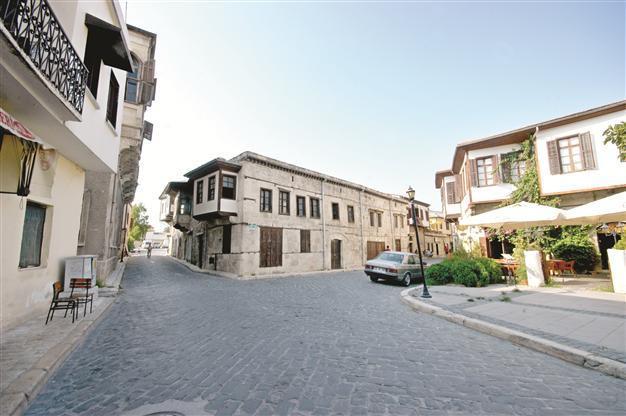Ancient Tarsus houses attract foreign tourists
MERSİN - Anadolu Agency

There are 300 old mansions in Tarsus that were licensed architectures and also a further 600 of them were non-licensed. Tarsus has many unique historical characteristics and buildings. AA photo
Mersin’s Tarsus district aims to attract tourists with its old mansions. The mansions will be restored, as part of a drive to boost tourism. Tarsus district governor Orhan Şefik Güldibi said there were many mansions that had the cultural characteristics of Tarsus. Most of them were two-storey buildings and were also reflecting the Turkish culture, he added.Noting that 300 of the mansions were licensed architectures, Güldibi said a further 600 of them were non-licensed. Tarsus has many unique historical characteristics and buildings. These houses should contribute to the tourism, he added.
New projects for Tarsus
The ministry is running a project to make these mansions a part of the tourism movement. “In the framework of this project, 12 houses will be restored and six of them have become venues to serve as social and cultural facilities,” added Güldibi.
However one of the areas has encountered a problem. The mansions have to be socialized and urbanized and as a result there were six new tender processes for the mansions, he said.
“While tourism means sea, sand and sun, there is also a cultural tourism, which is increasing its popularity in tourism trends.” According to Güldibi, the culture has to put forward for the tourism. “Turkey is the sixth country in terms of attracting tourists, however the revenue that the country gets from the tourism is low. That’s why we need new venues for tourism and Tarsus is one of them.”
Becoming a district like Safranbolu
The examples that Güldibi gave are Beypazarı, Altındağ and Safranbolu. “Tarsus has the same characteristics as these cities. There are really important examples of cultural architecture in Tarsus and we want to present these to the world.”
Güldibi added that after the restoration these houses would be in a better condition and Tarsus would be full with cultural beauty.
Noting that this was the best opportunity that the city had right now, Güldibi said, “some of the businessmen and businesswomen have taken some of the mansions and renewed them. Those will become boutique hotels.”
The future of Tarsus is tourism, according to Güldibi. The effect of industry has finished in the city.
“We are waiting for people to take the city with its tourism facilities and possibilities,” he said. We wait for investors, he added. Noting that there was rafting, nature walks, sea and sand tourism, Güldibi said every kind of tourism was possible in Tarsus. The cultural characteristic and buildings such as the mound of Gözlükule, which reveals that the prehistoric development of Tarsus reaches back to the Neolithic Period and continues unbroken through Chalcolithic and Early Bronze Ages, Cleopatra’s Gate, the ancient city gate still standing, the Roman bridge of Justinian over the Berdan River, and the Roman road are some of the attractions of Tarsus.
Tarsus American College, which started its educational program in 1888 as “St. Paul’s Institute at Tarsus” is still one of the attractions of the city. Its Stickler Hall, which was built in 1911, remains a symbol of TAC today, adds to the distinctiveness of the campus.
















